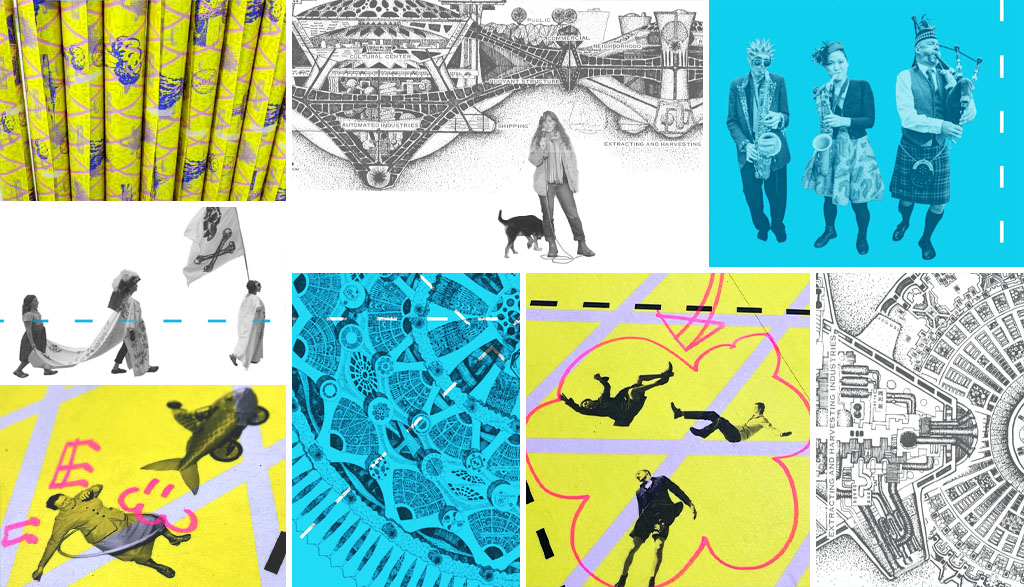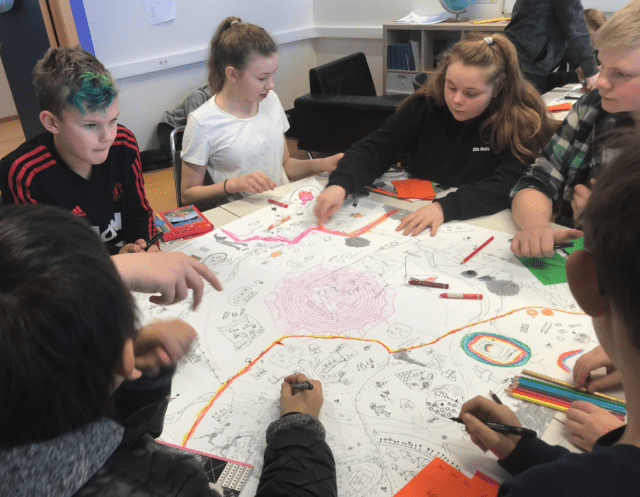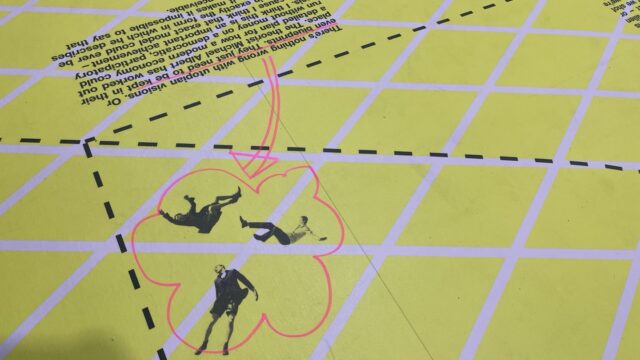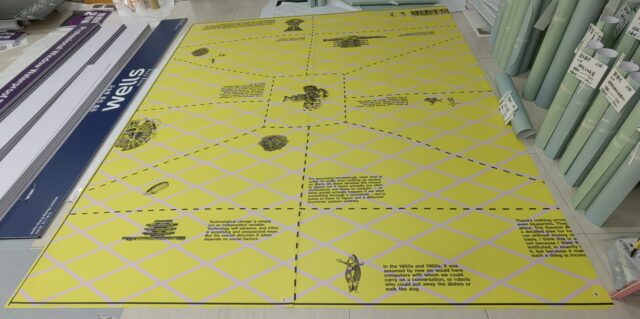For more than 15 years, we’ve been working on this project, and we have so much to share. Be part of it—download our doodle books, get our “Made Differently” and “A4kids” books, download our “napkins” to create your own a Visual Assembly, rewrite, redraw, and make it all your own!

The Visual Assembly is a democratic form of creative collaboration that aims to imagine new ways to run and organize our social systems. Every human society sustains itself through various forms of collective sociality. Different types of assemblies were developed as experiments in direct political deliberation, as a response to the crisis of representative democracy. Books and workshops we created around the world over the years became the basis for the way we conduct Visual Assemblies, in which people collaborate on public art projects. These assemblies are intended to facilitate direct, recurrent dialogue between people of different ages, classes, and social statuses, without intermediaries, whether teachers, artists, or other experts. Everyone is invited to participate on equal footing.

We believe that society would be freer, more peaceful, and happier if people could be directly and collectively involved in decision-making.
It takes practice, doesn’t it? Most of us aren’t used to making decisions together. In schools, children learn to follow instructions and compete with each other, not to work together and reach agreement.
Citizens’ assemblies, a type of direct democratic assembly, combine expert advice with discussions among participants, which is great! But can you join in if you’re a kid, a language learner, or just someone who is shy in public? What if, in addition to collective conversations, we also try drawing and writing together to communicate better? After all, some people communicate best with words, while others work better with drawings or gestures.
All assemblies, unlike academic conferences, always focus on a specific action. They focus on making something real: planning an action, directly solving a problem, or organizing a carnival. A Visual Assembly is an assembly that creates something practical. It produces a collective art project, but it also plans a possible social space: a school, a library, a hospital, a museum, or a city…
It would be great to create permanent assembly spaces where children and adults can gather to discuss and work on joint projects. We can use of the places they already visit, such as libraries, schools, museums, and art centers.
To create a permanent space for Visual Assembly we could make a large sticker mats that are durable and resilient. People can walk over them, draw, and write with colored pencils and chalk. The sticker mats can be washed and reused. They look great, they’re lightweight, can be easily rolled up, and sent anywhere by mail.
The sticker mats are not blank; rather, loose frameworks have been printed on them to help participants begin their project. These frameworks–which include structural elements but also may include outlines of cities, objects, or figures of people–offer an invitation to conversation and experiment. They can be integrated into the final drawing, be made to disappear, or anywhere in between. Both the discussions and the outcomes of a Visual Assembly can be saved, discussed, and looked at again later.
Visual assemblies are public art projects done by the people for people, without special training and without intermediaries in the form of authorities or experts.
Imagine that traditional public art — statues, mosaics, frescoes that were commissioned by the authorities from individual artists — is replaced by art that ordinary people create collectively and that offers a space for ongoing dialogue.
Just as Wikipedia is written and rewritten every day by many people in different countries, Visual Assembly lets us rethink our public spaces: squares, gardens, schools, cities, and perhaps countries.
The world is something that we make, and could just as easily make differently.















